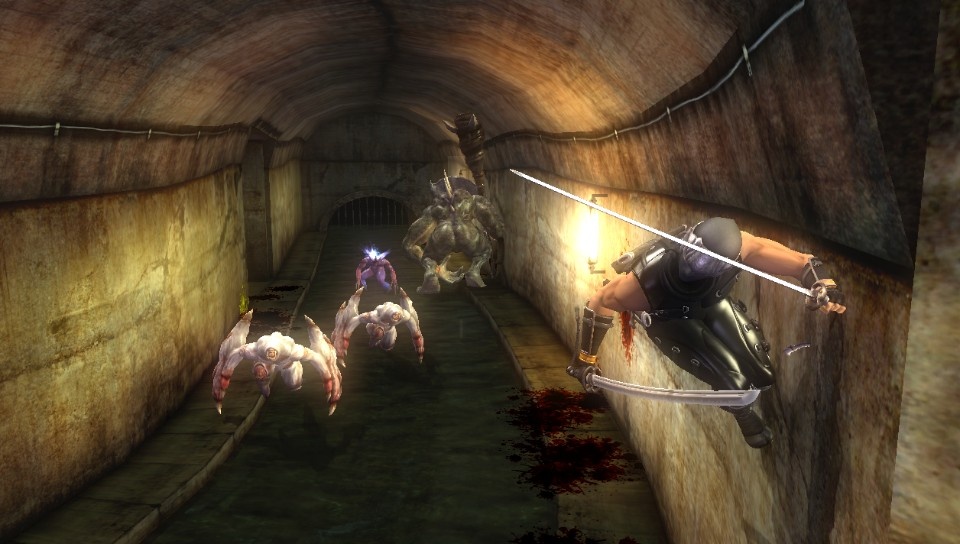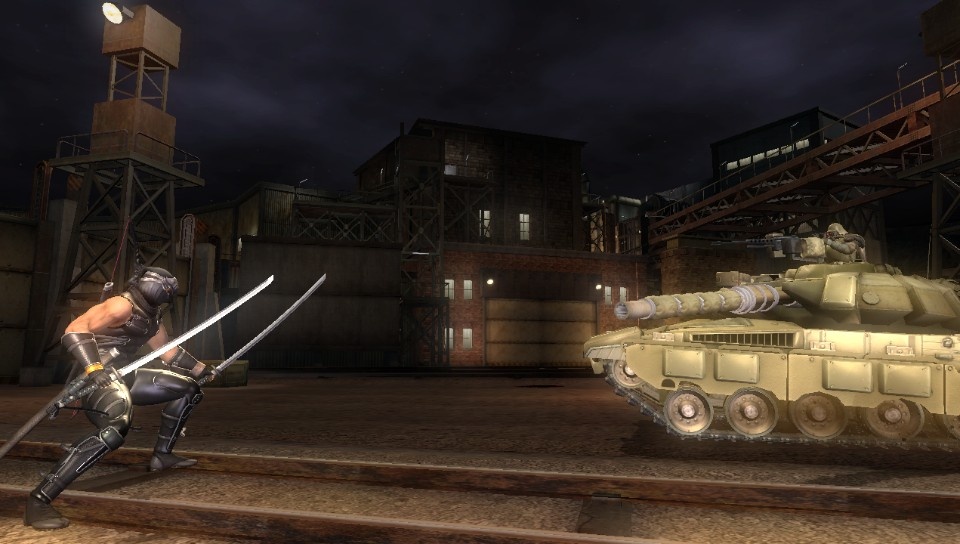The path of the ninja is a difficult and deadly one. It's brutal and bloody, and if you have the skills to walk it, it's immensely satisfying. 2007's Ninja Gaiden Sigma for the PlayStation 3 was a great update of one of the greatest action games of all time. Now, it's on the Vita as Ninja Gaiden Sigma Plus, and although the implementation of Vita features occasionally gets in the way, the years since Sigma's original release have done little to dull its edge. If you're up for a challenge and you haven't walked this path before, don't let this opportunity pass you by.
You spend most of your time in Sigma as series protagonist Ryu Hayabusa, a preternaturally agile ninja whose assortment of abilities makes him a swift and merciless bringer of death. The incredible controls make you feel seamlessly connected to Ryu; the instant you direct him to block, roll, or soar through the air to slice an opponent, he does it. It's a thrill to wield Ryu's gifts of power and grace, particularly because you constantly need to make skillful use of them to survive.
None of the enemies are pushovers. You face well-trained military operatives, demon-like fiends, and formidable bosses. Given the chance, any of them can quickly turn the tables on you. Knowing that each battle could easily be your last makes each one you survive a rewarding victory. If you don't want to be fighting for your life every step of the way, Sigma Plus has a difficulty option that makes things much easier, but removing the fangs from the game's combat also removes what makes it so special.
Ryu has the skills to make short work of just about any enemy he encounters, but possessing those skills and using them are two different things. You can't just swing your sword around willy-nilly and expect to emerge victorious; you must know when to evade and when to attack, and you must get past the defenses of your enemies before you can slice them to pieces. It can be grueling at first, and you may initially find yourself losing to the run-of-the-mill ninjas you encounter early on. But as you play, you naturally get better, developing a better sense of how to use Ryu's abilities to more effectively slaughter your enemies.

Getting better and being able to surmount challenges that previously seemed dire is an invigoratiing sensation, making combat of Ninja Gaiden as rewarding today as it was when the series made its debut. Unfortunately, the camera still has a tough time in tight spots just like it did when the series made its debut, but this minor blemish doesn't impact the action frequently enough to significantly interfere with the intensity.
Along with a host of minor tweaks to the original Ninja Gaiden, Sigma added a few chapters in which you play as the demon hunter Rachel. Rachel isn't as quick and nimble as Ryu, but her war hammer really packs a wallop, and she has her own arsenal of attacks that are satisfying to learn and employ. Her more hard-hitting approach to combat makes for a pleasant change of pace, and she never overstays her welcome.
As you advance, you're rewarded not only with that intangible sense of becoming a more effective and lethal ninja, but also with better weapons and new techniques that help make you such a ninja. Some of these techniques take the form of ninpo, or ninja magic, and these can be very helpful when you're surrounded by enemies. Unfortunately, Sigma Plus takes one cue from Sigma that it shouldn't have; where that game required you to shake the controller to power up ninpo, this one requires you to perform various simple touch actions, like tapping a particular area of the rear touch pad repeatedly, to build up a spell's strength. These short sequences are easily completed, but they break up the flow of battle.

Sigma Plus also incorporates the Vita's touch and tilt functionality into Ryu's ranged attacks. When using the bow (or just entering first-person view to examine your surroundings), you can look around by moving the Vita, and you can fire at a specific spot by tapping the screen. Unfortunately, just grazing the screen with your finger (which is easy to do) moves you into first-person view, and this can result in disaster when it happens in the heat of combat. Eventually you may learn to keep your fingers from straying onto the screen, but an option to turn this touch functionality off altogether would have been a better solution.
Sigma Plus looks gorgeous on the Vita. Silky-smooth animations make the brutal combat captivating, and though the environments look a bit sterile by current standards, solid art design gives the varied regions you explore an exotic sense of history. More importantly, the fast, intense, challenging combat is as exciting as ever. With its lengthy, consistently thrilling campaign and a slew of ninja trials that really put your skills to the test, Sigma Plus certainly gives you your money's worth. Some of the Vita's features are crammed in here in inelegant ways that don't benefit the overall experience, but this is still a fine version of a stellar action game. If you somehow still haven't experienced the excitement of Ninja Gaiden, you should play Ninja Gaiden Sigma Plus.